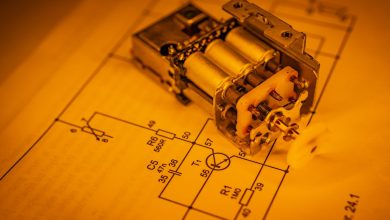Best Mining Algorithms and the Tools That Support Them
Best Mining Algorithms and the Tools That Support Them

Best Mining Algorithms and the Tools That Support Them
Are advanced mining algorithms the key to unlocking more efficient and sustainable operations in the industry?
The mining industry is on the cusp of a technological revolution, driven by innovations in algorithms and tools that support them. As the demand for minerals and metals continues to grow, the need for more efficient, safe, and environmentally friendly mining practices has become paramount.

The integration of cutting-edge mining technology is transforming the landscape of mining operations, enabling companies to optimize their processes and improve productivity.
Key Takeaways
- Efficient mining operations rely on advanced algorithms.
- The mining industry is adopting new technologies to improve sustainability.
- Cutting-edge mining technology is enhancing productivity.
- The right tools are crucial for supporting complex mining algorithms.
- Innovations in mining are driven by the need for safer, more efficient practices.
The Evolution of Mining Technology and Algorithms
Mining technology has evolved substantially, from rudimentary methods to sophisticated computational approaches. This transformation has significantly impacted the mining industry, enhancing operational efficiency and productivity.
From Manual Methods to Computational Approaches
Historically, mining operations were labor-intensive and relied on manual techniques. The introduction of computational methods marked a significant shift, enabling more accurate resource estimation and mine planning. Modern mining operations now heavily rely on advanced algorithms to optimize various processes.
The Role of Algorithms in Modern Mining Operations
In modern mining, algorithms play a crucial role in enhancing operational efficiency. They are used in resource estimation, mine planning, and equipment management, among other areas. The integration of mining algorithms has enabled mining companies to reduce costs and improve productivity.
The use of advanced algorithms has become a cornerstone in the mining industry, driving innovation and efficiency. As the industry continues to evolve, the development and implementation of more sophisticated algorithms are expected to further transform mining operations.
Resource Estimation Algorithms in Mining
Advanced algorithms play a crucial role in resource estimation, enabling mining companies to make informed decisions. Resource estimation is a complex process that involves predicting the quantity and quality of mineral resources. This process is fundamental to mine planning and optimization.
Geostatistical Methods
Geostatistical methods are widely used in resource estimation for their ability to model spatial variability. These methods provide a robust framework for analyzing and predicting the distribution of mineral resources. Geostatistics involves the use of statistical models to analyze spatially autocorrelated data, making it particularly useful in mining.
Kriging Techniques
Kriging is a geostatistical technique used for interpolating the value of a regionalized variable at unsampled locations. It is a key method in resource estimation, providing unbiased predictions with minimal variance. Kriging techniques are essential for creating accurate models of mineral deposits.
Block Modeling Algorithms
Block modeling is a critical step in resource estimation, involving the division of a mineral deposit into smaller, manageable blocks. These blocks are then evaluated for their economic potential. Block modeling algorithms facilitate the creation of detailed models that are used in mine planning and optimization.
| Algorithm | Description | Application |
|---|---|---|
| Geostatistical Methods | Statistical models for spatial data analysis | Resource estimation and prediction |
| Kriging Techniques | Interpolation method for unsampled locations | Mineral deposit modeling |
| Block Modeling Algorithms | Division of mineral deposits into economic blocks | Mine planning and optimization |
Mine Planning and Design Algorithms
Mine planning and design algorithms play a pivotal role in optimizing mining processes, ensuring maximum productivity. These algorithms are crucial for determining the most efficient and cost-effective methods for extracting minerals.
Pit Optimization Algorithms
Pit optimization algorithms are used to determine the best possible pit design, maximizing the economic viability of the mining project. According to
“The use of pit optimization algorithms can significantly improve the profitability of a mine by identifying the optimal extraction sequence.”
These algorithms consider various factors such as geology, grade distribution, and economic parameters to achieve this goal.
Key benefits of pit optimization algorithms include:
- Increased profitability
- Improved operational efficiency
- Better risk management
Underground Mine Design Algorithms
Underground mine design algorithms focus on optimizing the layout and infrastructure of underground mines. These algorithms help in planning the most efficient tunnel networks and extraction methods. As noted by experts,
“Underground mine design algorithms are essential for ensuring the safety and productivity of underground mining operations.”
Scheduling Optimization Techniques
Scheduling optimization techniques are vital for planning and managing mining operations. These techniques ensure that mining activities are carried out in the most efficient sequence, minimizing delays and reducing costs. Efficient scheduling is critical for maintaining a competitive edge in the mining industry.
The use of advanced scheduling optimization techniques can lead to significant improvements in productivity and cost savings. By optimizing the mining schedule, mines can better meet production targets and adapt to changing market conditions.
Drilling and Blasting Optimization Algorithms
The application of sophisticated algorithms in drilling and blasting has revolutionized the mining industry by enhancing operational efficiency and reducing costs. Drilling and blasting are critical components of mining operations, and their optimization is essential for improving productivity and safety.
Several algorithms are used to optimize drilling and blasting operations. These include:
- Blast pattern design algorithms
- Fragmentation prediction models
- Vibration control algorithms
Blast Pattern Design Algorithms
Blast pattern design algorithms are used to optimize the layout of blast holes, taking into account factors such as rock type, density, and the desired fragmentation size. This optimization helps in achieving the desired blast results while minimizing costs.
Fragmentation Prediction Models
Fragmentation prediction models are crucial for estimating the size distribution of fragments after blasting. These models help in planning and optimizing the blasting process to achieve the desired fragmentation, which is vital for subsequent processing stages.
Vibration Control Algorithms
Vibration control algorithms are designed to minimize the environmental impact of blasting by controlling the vibrations caused by the blast. This is achieved by optimizing the blast design and timing.
| Algorithm Type | Purpose | Benefits |
|---|---|---|
| Blast Pattern Design | Optimize blast hole layout | Improved blast results, cost minimization |
| Fragmentation Prediction | Estimate fragment size distribution | Optimized blasting process, improved processing efficiency |
| Vibration Control | Minimize environmental impact | Reduced vibrations, improved safety |
By leveraging these algorithms, mining operations can significantly enhance their efficiency, safety, and environmental sustainability.
Ventilation and Safety Algorithms in Mining
Ventilation and safety algorithms play a pivotal role in modern mining, reducing hazards and improving productivity. Effective ventilation is crucial for removing harmful gases and dust, thereby ensuring a safe working environment for miners.
Air Flow Optimization Algorithms
Air flow optimization algorithms are designed to improve ventilation efficiency in mines. These algorithms analyze various factors, including mine geometry, airflow resistance, and fan performance, to optimize airflow distribution. By doing so, they help reduce energy consumption and enhance overall mine safety.
Gas Detection and Monitoring Systems
Gas detection and monitoring systems are integral to mine safety. These systems utilize advanced sensors and algorithms to detect harmful gases, such as methane and carbon monoxide, in real-time. Upon detection, the systems can trigger alarms and initiate corrective actions to prevent accidents.
Emergency Response Algorithms
Emergency response algorithms are critical for preparing for and responding to potential hazards in mines. These algorithms can simulate various emergency scenarios, helping mine operators develop effective response plans. By leveraging these algorithms, mines can minimize the impact of emergencies and ensure a swift return to normal operations.
In conclusion, ventilation and safety algorithms are essential components of modern mining operations. By optimizing air flow, detecting harmful gases, and preparing for emergencies, these algorithms significantly enhance mine safety and productivity.
Equipment Selection and Fleet Management Algorithms
Optimizing mining operations requires precise equipment selection and efficient fleet management algorithms. The complexity of mining operations demands sophisticated tools and techniques to ensure that the right equipment is used effectively and managed properly.
Equipment Matching Algorithms
Equipment matching algorithms are designed to optimize the compatibility and performance of different mining equipment. By analyzing factors such as equipment capacity, operational costs, and production requirements, these algorithms help mining companies select the most suitable equipment for their specific needs.
Fleet Dispatch Optimization
Fleet dispatch optimization involves using algorithms to manage and allocate mining equipment efficiently. This includes assigning tasks, routing vehicles, and scheduling maintenance to minimize downtime and maximize productivity.

Maintenance Scheduling Algorithms
Maintenance scheduling algorithms are crucial for reducing equipment downtime and extending the lifespan of mining machinery. By predicting maintenance needs and scheduling repairs during optimal periods, these algorithms help maintain operational continuity.
Effective equipment selection and fleet management algorithms are integral to modern mining operations. By leveraging these advanced tools, mining companies can enhance productivity, reduce costs, and improve overall operational efficiency.
Mining Process Optimization Algorithms
Advanced mining algorithms are being used to optimize different stages of the mining process, from crushing and grinding to mineral processing. These algorithms are crucial for improving the efficiency and productivity of mining operations.
The optimization of crushing and grinding processes is a significant area of focus, as these processes are energy-intensive and have a substantial impact on the overall cost of mining. Algorithms used in this stage help in reducing energy consumption and improving the quality of the output.
Crushing and Grinding Optimization
Crushing and grinding optimization algorithms are designed to minimize energy consumption while maximizing the output. These algorithms use advanced mathematical models to predict the behavior of the material being processed and adjust the parameters of the crushing and grinding equipment accordingly.
Mineral Processing Algorithms
Mineral processing algorithms are used to optimize the separation of minerals from the ore. These algorithms help in improving the recovery of valuable minerals and reducing the loss of minerals in the tailings.
Recovery Enhancement Techniques
Recovery enhancement techniques are critical in maximizing the recovery of minerals from the ore. These techniques involve the use of advanced algorithms to optimize the processing conditions, such as pH, temperature, and reagent dosage.
As noted by industry experts, “The use of advanced algorithms and machine learning techniques is revolutionizing the mining industry by improving the efficiency and productivity of mining operations.”
“The integration of data analytics and AI in mining processes is expected to drive significant improvements in the coming years.”
Environmental Impact Assessment Algorithms
The integration of environmental impact assessment algorithms is revolutionizing the mining sector’s approach to sustainability. These algorithms play a crucial role in minimizing the ecological footprint of mining operations by optimizing various processes.
Water Management Algorithms
Effective water management is critical in mining operations. Water management algorithms help in optimizing water usage, predicting water quality, and managing wastewater. These algorithms enable mining companies to reduce their water footprint and comply with environmental regulations.
Tailings Disposal Optimization
Tailings disposal is a significant environmental concern in mining. Tailings disposal optimization algorithms are used to minimize the environmental impact of tailings by optimizing their storage and disposal. This includes designing tailings dams and managing tailings to prevent environmental hazards.
Reclamation Planning Algorithms
Reclamation planning is essential for restoring mined lands to their natural state or repurposing them for other uses. Reclamation planning algorithms assist in creating effective reclamation plans by analyzing various factors such as soil quality, vegetation, and land topography.
By leveraging these environmental impact assessment algorithms, mining companies can significantly reduce their environmental footprint and improve their sustainability performance.

Advanced Software Tools Supporting Mining Algorithms
Advanced software tools have become indispensable in the mining sector, enabling the efficient application of mining algorithms. These tools have transformed the way mining operations are planned, executed, and monitored, leading to improved productivity and reduced costs.
Mine Planning Software
Mine planning software is a critical tool in the mining industry, allowing for the optimization of mine design and planning. It enables mining engineers to create detailed plans, taking into account various factors such as geology, equipment availability, and production targets. Software like MineSched and Whittle are widely used for pit optimization and mine scheduling.
Geological Modeling Tools
Geological modeling tools are essential for understanding the geological structure of a mine. These tools help in creating detailed models of the ore body, which are crucial for planning and execution. Software such as Leapfrog and Micromine are popular choices for geological modeling.
Simulation and Visualization Platforms
Simulation and visualization platforms play a vital role in mining by allowing operators to simulate different scenarios and visualize the outcomes. This capability is crucial for optimizing mining operations and improving safety. Tools like Arena and FlexSim are used for simulating various mining processes.
Real-time Monitoring Solutions
Real-time monitoring solutions are increasingly being adopted in the mining industry to monitor equipment and operations in real-time. This allows for immediate response to issues, reducing downtime and improving overall efficiency. Systems like Modular Mining’s DISPATCH are examples of real-time monitoring solutions.
| Software Tool | Functionality | Industry Impact |
|---|---|---|
| MineSched | Mine scheduling and optimization | Improved production planning |
| Leapfrog | Geological modeling | Enhanced geological understanding |
| Arena | Simulation and modeling | Better operational planning |
As noted by industry experts, “The use of advanced software tools in mining has been a game-changer, enabling more efficient and safe operations.” The integration of these tools with mining algorithms has significantly enhanced the mining industry’s ability to optimize operations and improve decision-making.
Data Analytics and AI in Modern Mining
The mining industry is on the cusp of a technological revolution, driven by data analytics and AI. As the sector continues to evolve, the integration of advanced technologies is enhancing operational efficiency, improving safety, and reducing costs.
Predictive Maintenance Applications
Predictive maintenance is a significant application of data analytics in mining. By analyzing equipment sensor data, mining companies can predict when maintenance is required, reducing downtime and increasing overall equipment effectiveness. Machine learning algorithms play a crucial role in identifying patterns that indicate potential failures.
Production Forecasting Models
Data analytics enables the development of sophisticated production forecasting models. These models use historical data, geological information, and operational parameters to predict future production levels, helping mining companies to optimize their operations and make informed decisions.
Autonomous Mining Systems
Autonomous mining systems represent a significant advancement in mining technology. These systems, powered by AI and data analytics, can operate independently, improving safety and efficiency. Autonomous haulage systems, for example, can transport materials without human intervention, reducing labor costs and enhancing productivity.
Machine Learning for Resource Estimation
Machine learning is being increasingly used for resource estimation in mining. By analyzing geological data, machine learning algorithms can provide more accurate estimates of mineral resources, helping to optimize mine planning and reduce exploration costs.
The adoption of data analytics and AI in mining is not just a trend; it’s a necessity for companies looking to remain competitive. As these technologies continue to evolve, their impact on the mining industry is expected to grow, driving further improvements in efficiency, safety, and productivity.
Conclusion: Future Trends in Mining Algorithms and Technology
The mining industry is on the cusp of a technological revolution, driven by advancements in mining algorithms and technology. As discussed, various algorithms have transformed mining operations, from resource estimation to mine planning and equipment management.
Future trends in mining algorithms and technology are expected to further enhance operational efficiency, safety, and environmental sustainability. The integration of data analytics and AI is likely to play a significant role in predictive maintenance, production forecasting, and autonomous mining systems.
As the mining industry continues to evolve, staying ahead of the curve in terms of technological advancements will be crucial. The adoption of new mining algorithms and technologies will enable mining companies to optimize operations, reduce costs, and improve productivity.
The future of mining algorithms and technology holds much promise, and the industry is poised to benefit from these innovations, driving growth and sustainability in the years to come.
FAQ
What are the most common algorithms used in resource estimation for mining?
Geostatistical methods, kriging techniques, and block modeling algorithms are commonly used for resource estimation in mining. These algorithms help in accurately estimating mineral resources and reserves.
How do mine planning and design algorithms improve mining operations?
Mine planning and design algorithms, such as pit optimization and underground mine design algorithms, help in maximizing the economic viability of mining projects. Scheduling optimization techniques also play a crucial role in improving mining efficiency.
What is the role of drilling and blasting optimization algorithms in mining?
Drilling and blasting optimization algorithms, including blast pattern design and fragmentation prediction models, help in improving the efficiency and safety of mining operations. Vibration control algorithms also reduce the environmental impact of mining.
How do ventilation and safety algorithms contribute to a safe working environment in mines?
Ventilation and safety algorithms, such as air flow optimization and gas detection systems, ensure a safe working environment for miners. Emergency response algorithms also prepare for potential hazards.
What are the benefits of using equipment selection and fleet management algorithms in mining?
Equipment selection and fleet management algorithms, including equipment matching and fleet dispatch optimization, improve the efficiency and productivity of mining operations. Maintenance scheduling algorithms also reduce downtime.
How do mining process optimization algorithms enhance mineral recovery?
Mining process optimization algorithms, such as crushing and grinding optimization and mineral processing algorithms, improve the efficiency and productivity of mining operations. Recovery enhancement techniques maximize mineral recovery.
What is the significance of environmental impact assessment algorithms in mining?
Environmental impact assessment algorithms, including water management and tailings disposal optimization, reduce the environmental footprint of mining operations. Reclamation planning algorithms restore mined lands.
How do advanced software tools support mining algorithms?
Advanced software tools, such as mine planning software and geological modeling tools, optimize mining operations and improve decision-making. Simulation and visualization platforms also enhance mining efficiency.
What are the applications of data analytics and AI in modern mining?
Data analytics and AI are used in predictive maintenance, production forecasting, and autonomous mining systems. These technologies improve the efficiency and productivity of mining operations.
What are some future trends in mining algorithms and technology?
Future trends include the adoption of new technologies, such as machine learning and autonomous systems, to further improve mining operations. Innovations in mining algorithms and technology will continue to shape the industry.
How do mining companies benefit from adopting new mining technologies?
Mining companies benefit from adopting new mining technologies, such as advanced algorithms and software tools, by improving efficiency, productivity, and safety. These technologies also reduce environmental impact and enhance decision-making.
What is the role of sustainable mining practices in the mining industry?
Sustainable mining practices, supported by mining algorithms and technology, aim to minimize the environmental footprint of mining operations while ensuring economic viability and social responsibility.





